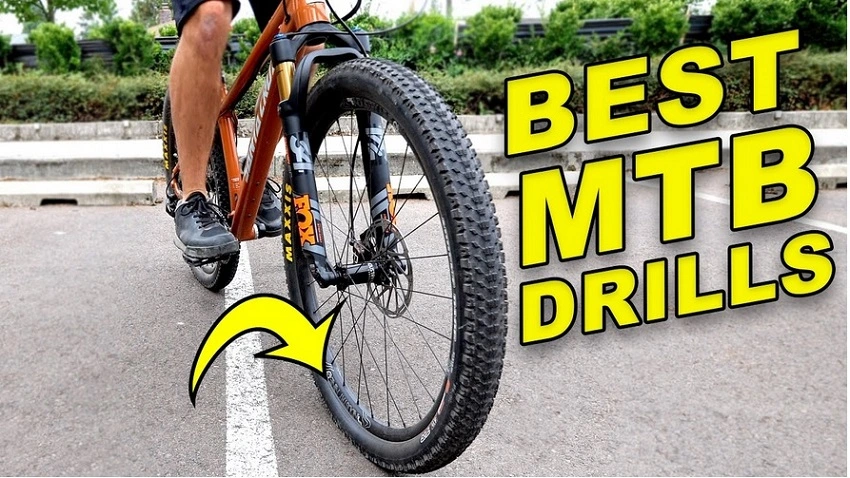Mountain biking requires good technique to overcome obstacles like rocks, ruts, and roots. With modern suspension and tire technology, timing your approach and deploying good body position to ride over or around the obstacle is often a matter of timing your approach.
Sit on your bike and consciously shift your hand pressure from clenching with fists to neutral (light hands). Notice how this changes your ability to control the bike.
Follow the Leader
Mountain biking is a sport that requires power over long intervals. Producing this power off-road in a low cadence places unique demands on the muscles that are used to do so, and this type of training is very different from road cycling intervals.
Beginners of MTB training often need help with the basic ability to control their bikes at slow speeds. Practicing slow-speed maneuvers is one of the best ways to improve this skill.
One of the simplest drills to try is to follow the leader. Have a group of riders ride around a parking lot or dead-end street while the leader leads. This is a great way to improve balance at low speeds while having fun. The leader should vary the pace and surprise the followers by slowing down suddenly or turning in the middle of a line.
Speed Lean
Getting over obstacles on the trail requires more finesse and technique than brute strength. This is one of the most basic and essential skills to work on, especially regarding speedy riding.
Drill:
- Ride a figure 8 or ride in a straight line while noticing your hand pressure on the bars (bike/body separation).
- Focus on minimizing upward or downward pressure and finding a neutral or “light hands” grip for a few seconds.
- Repeat this, both pedaling and standing up.
Set up a section of the trail or even a parking lot with cones like a dual slalom course. Then, practice navigating in and out of the cones while looking far ahead for the next obstacle, turn, or terrain change.
Front Brake Tilt
Some trail sections like roots and rocks require you to trust your suspension and tires. This means letting them take the jolts instead of stopping and starting over. You can train for this by using some basic braking drills.
Find a spot where you can practice the following drills, ideally without any other distractions or traffic (like an empty parking lot or a dead-end street). Start by riding around a line with your bike, focusing on staying straight. Eventually, let go of one hand at a time until you can ride around the line without swerving.
Next, re-do the line drill, focusing on body position and hip movement. Try alternating between clenching the grips tightly with your fists and a neutral position where your hands barely touch the handlebar grips.
Pick Up a Bottle
A basic yet effective bike handling drill. Place a bottle on the ground and ride by while leaning over to pick it up. This helps to build balance and body/bike separation.
To make this drill harder, hold onto your calf, then move down to your ankle and, eventually, your heel. This drill is great for practicing shifting and carrying momentum into and over hills.
Practicing these drills will help you become more comfortable riding in packs and at slow speeds. They are key for safe group riding and will help prevent any crashes from happening! Practice these drills often. They will improve with repetition and are the best way to develop your skills! This is how you will progress from beginner to expert!
Slow Speed Maneuvers
While modern mountain bikes can handle a lot of terrains, beginners need to practice handling slow-speed maneuvers in a bike training program. Not being able to change direction quickly can lead to dropping your bike, getting stranded, or worse, crashing.
Drills like Figure 8 help riders train their bodies to move with the bike and stay balanced. They also improve throttle and brake control by practicing a crouched position off the saddle.
Set up a series of cones in a slalom formation and ride into each one, focusing on the low body position and hip movement through the turns. Repeat 2-3 times before progressing to a higher speed before heading out on the trails. The more time you spend on these basic skills, the better your mountain biking will be!




